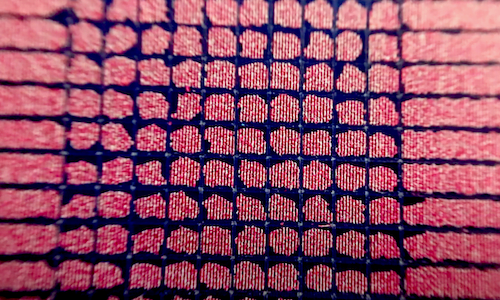This article is part of the FLEXO FLAW FIXING series
In the specialised field of printing, achieving perfect harmony between ink and substrate is paramount for producing high-quality prints. One of the challenges hindering this harmony is the issue of low ink adhesion in flexo printing. This printing defect, characterised by the ink’s failure to properly bind or stick to the substrate, can significantly compromise the quality and durability of the printed material. Understanding what low ink adhesion is, how to test it, its causes and mitigation strategies is crucial for anyone participating in the flexo industry.
What is Low Ink Adhesion in Flexo Printing?
Ink adhesion refers to the ability of the ink to stick firmly to the surface of the substrate (which can be paper, plastic, foil, etc.) upon which it is printed. Low ink adhesion occurs when the ink does not adequately cling to the substrate, potentially leading to smudging, scratching off, or failing to withstand the conditions of exposure during use. This not only affects the aesthetic appeal of the print but also its functional attributes, making this a critical quality issue.
Testing Ink Adhesion: The Adhesion Tape Test
The adhesion tape test is a simple and common method to assess the degree of ink adhesion on a substrate. This test involves applying a piece of adhesive tape over the printed area, pressing it down to ensure it adheres well, and then peeling it off. The amount of ink removed by the tape provides a qualitative measure of the ink’s adhesion to the substrate. A high level of ink removal indicates poor adhesion, whereas minimal to no ink removal suggests good adhesion. This straightforward procedure is essential for quality control in flexographic printing processes.
Acing the Problem of Low Ink Adhesion in Flexo Printing
The issue of low ink adhesion can originate from a multitude of factors related either to the inks used or to substrate characteristics. Each cause requires specific mitigations to ensure optimal print quality.
Ink Problems
1. Incorrect pH-Value of Inks
- Cause: An overly low pH-value, especially during prolonged printing times, can undermine ink adhesion.
- Mitigation: Use fresh ink and ensure the utilisation of correct solvents to maintain appropriate pH levels.
2. Low Ink Viscosity
- Cause: Inks with too low viscosity can fail to adhere correctly.
- Mitigation: Increase the ink’s viscosity by adding fresh ink to the mix.
3. Inappropriate Ink Formulation
- Cause: Using the wrong ink formulation or incorrect ink system.
- Mitigation: Confirm that the ink system used is suitable for the substrate, including the correct ingredients, preparation method, curing process, and other relevant parameters.
4. Insufficient Adhesion Between Colours
- Cause: Issues can arise if inks of incompatible ink systems are on top of each other.
- Mitigation: Ensure compatible ink systems and appropriate ink build-up to avoid adhesion problems between layers.
5. Multiple Colour Build-Up
- Cause: The initial ink layer failing to display strong adhesion, being compromised by subsequent layers.
- Mitigation: Verify that the first ink layer adheres well and isn’t negatively affected by following ink applications.
Substrate Problems
1. Inadequate Corona Pretreatment
- Cause: Too low a level of corona treatment on the substrate can hamper ink adhesion.
- Mitigation: Regularly check and adjust the corona treatment levels and monitor substrate age to ensure optimal surface energy for ink adhesion.
2. Substrate Surface Contamination
- Cause: Dirt or residues on the substrate can prevent ink from adhering effectively.
- Mitigation: Clean the substrate thoroughly or apply a suitable primer to enhance adhesion, or switch to a cleaner substrate batch.
3. Printing on the Wrong Side
- Cause: Some substrates have a designated printing side due to specific treatments applied for better adhesion.
- Mitigation: Always confirm the correct side of the substrate is used for printing.
Conclusion
tackling the challenge of low ink adhesion in flexographic printing necessitates a comprehensive understanding of the numerous factors that influence ink-substrate interaction. By identifying the root cause of adhesion issues – be it ink formulation, substrate preparation, or process parameters – solutions can be systematically applied to mitigate these problems. Adhering to best practices in ink and substrate selection, product handling, and process control is fundamental to achieving the desired adhesion and, ultimately, superior print quality. As the flexo printing industry continues to evolve, ongoing research and development in ink and substrate technologies will further enhance our capabilities to address the challenge of low ink adhesion, ensuring that high-quality, durable prints remain the standard.



![[Flexo Flaw Fixing] Ink Mottling Mottled_Print](https://flexopedia.net/wp-content/uploads/2022/06/Mottled_Print-150x150.png)
![[Flexo Flaw Fixing] Horizontal Streaks Transverse Stripes in flexo](https://flexopedia.net/wp-content/uploads/2022/07/063_Transverse_Stripes-jpeg-e1703168980304.webp)
